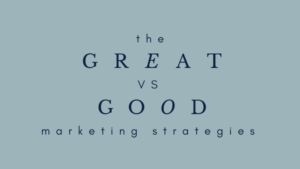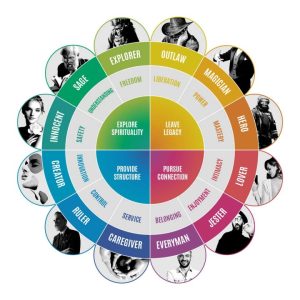Brands are more than just a name or logo; strong brands represent a unique identity and personality that connects with their audience. Brand archetypes are a powerful tool that helps businesses understand and communicate their brand’s character and values. In this article, we’ll explore what brand archetypes are, why they matter, and how businesses can use them to build a strong brand identity.
What are brand archetypes?
Brand archetypes are universal, symbolic characters or personas that represent different aspects of human nature. They are based on the archetypes that Carl Jung, a Swiss psychologist, identified in his theories of the collective unconscious. Brand archetypes tap into the collective cultural experience of the audience and evoke deep emotions and meanings that resonate with them. Every brand or even person fits into one (selecting family and friends’ archetypes can make for an interesting dinner party challenge!).
There are twelve main archetypes that brands can choose from, and each archetype has its unique set of values, behaviours, and attitudes. The twelve archetypes are:
- The Innocent
- The Explorer
- The Sage
- The Hero
- The Outlaw
- The Magician
- The Regular Guy/Girl
- The Lover
- The Jester
- The Caregiver
- The Creator
- The Ruler
Each archetype has a distinctive personality, story, and set of values that can help businesses create a consistent brand message and image across all communication channels.
Why do brand archetypes matter?
Brand archetypes matter because they provide businesses with a framework for building a unique and recognisable brand identity. By understanding their brand archetype, businesses can communicate their brand’s personality and values in a way that resonates with their target audience and is consistent over time.
Brand archetypes help businesses create an emotional connection with their audience by tapping into their deeper needs, desires, and motivations. Brands that use archetypes effectively can build a loyal following and create a sense of community around their brand.
How to use brand archetypes?
To use brand archetypes effectively, businesses must first identify their brand’s personality and values. They can do this by asking questions such as:
- What does our brand stand for?
- What are our core values?
- What is our brand’s story?
- What kind of emotions do we want to evoke in our audience?
- What are the unique characteristics and personality of our brand?
Once businesses have identified their brand’s personality and values, they can choose an archetype that best represents their brand. They can then use this archetype to create a consistent brand message and image across all communication channels, including their website, social media, advertising, and packaging.
Here are some examples of brands that have effectively used brand archetypes:
- The Innocent: Coca-Cola. Coca-Cola embodies the innocent archetype by promoting happiness, joy, and optimism. Its advertising campaigns often feature wholesome, family-friendly imagery and messaging.
- The Explorer: Jeep. Jeep embodies the explorer archetype by promoting adventure, freedom, and self-discovery. Its advertising campaigns often feature rugged, off-road vehicles in exotic locations.
- The Sage: Google. Google embodies the sage archetype by promoting knowledge, wisdom, and innovation. Its messaging focuses on the power of information and the importance of intellectual curiosity.
- The Hero: Nike. Nike embodies the hero archetype by promoting courage, determination, and victory. Its advertising campaigns often feature athletes overcoming obstacles and achieving greatness.
- The Outlaw: Harley-Davidson. Harley-Davidson embodies the outlaw archetype by promoting rebellion, individuality, and freedom. Its messaging focuses on breaking free from the constraints of society and living life on your terms.
So, if you own a business, have a go at your brand archetype as understanding this can be a super powerful tool that will help create a unique and recognisable identity for your brand. By understanding your brand’s personality and values and choosing an archetype that best represents your brand, you can develop a consistent brand message and image that resonates with your audience.
Have a go at it!







